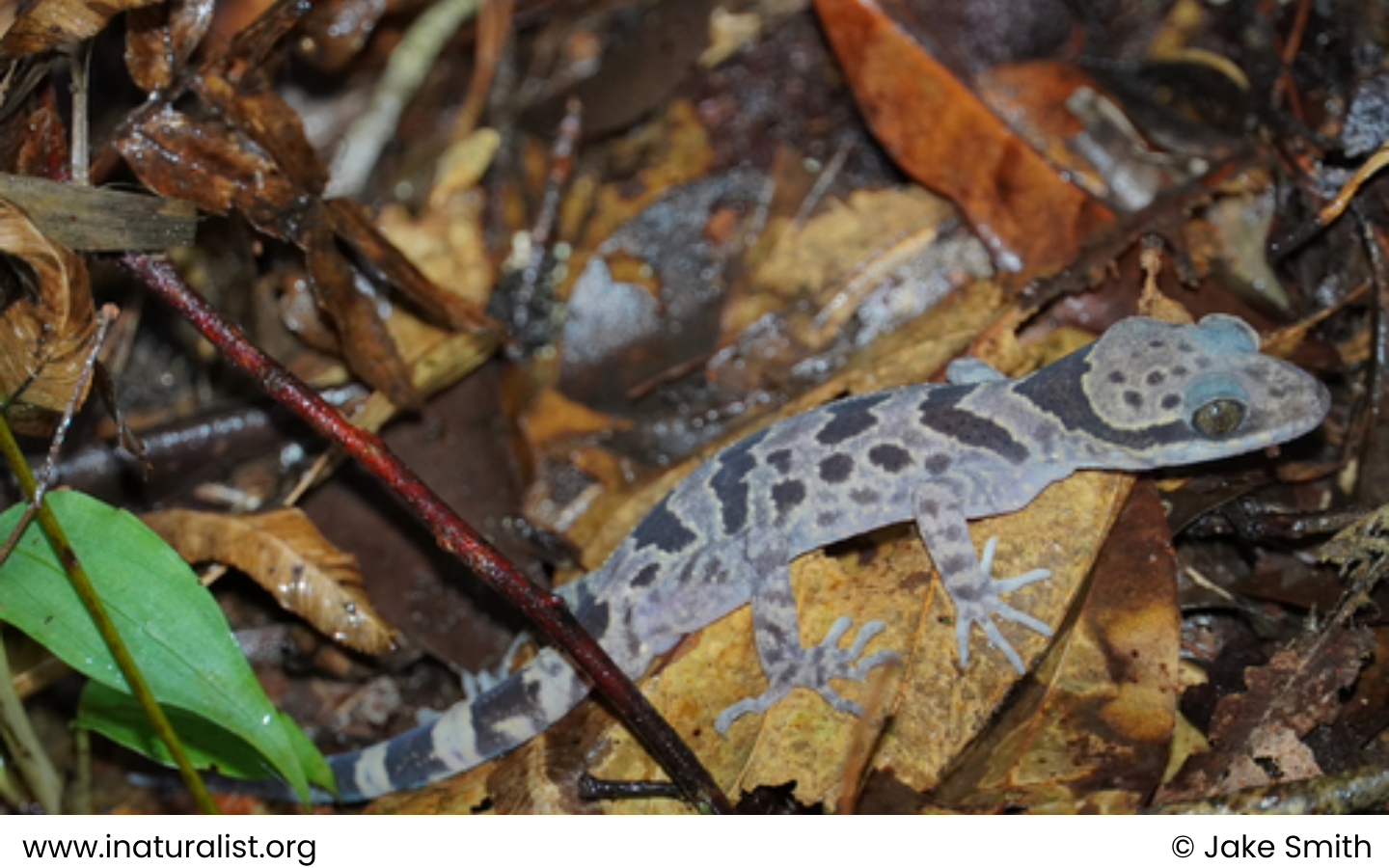
Science name: Cyrtodactylus bidoupimontis – Nazarov, Poyarkov, Orlov, Phung, Nguyen, Hoang & Ziegler, 2012
Taxonomic: Animalia>> Chordata>> Reptilia>> Squamata >> Gekkonidae >> bidoupimontis
Species status: Endemic ; IUCN status: LC (Least Concern)
Description:
Physical characteristics:
This is a medium-sized gecko species, with a maximum snout-vent length (SVL) of 86.3 mm. The body is slender, with moderately long limbs and digits, and the original tail is thin and somewhat longer than the body.
The species has two pairs of postmental scales, with the first pair in broad contact with each other. The dorsal tubercles are enlarged, flattened, and weakly keeled, arranged in 18–24 irregular longitudinal rows. The ventral scales between the lateral folds range from 38 to 43 in number.
Coloration: The dorsal coloration is light yellow with 4–5 dark irregular transversal dorsal bands, usually bordered by lighter edges. The limbs are marked with irregular dark bands. The neck has a well-developed band, which widens posteriorly. The dorsal surface of the head is light, sometimes with faint dark spots. The tail is marked with 7–9 dark transverse bands, which fade on the ventral side.
Distribution and habitat:
Elevation: Found at elevations ranging from 1,500 to 1,900 meters.
Area: This species is endemic to Vietnam, where it has been recorded from Hon Ba Nature Reserve in Khanh Hoa Province and Bi Doup-Nui Ba National Park in Lam Dong Province. Its known range is fully protected within these areas.
Habitat: Cyrtodactylus bidoupimontis inhabits primary montane evergreen forests. It is typically found low on the trunks of trees within these high-altitude forests.
Behaviour and ecology:
Lifestyle: Cyrtodactylus bidoupimontis is a nocturnal species that is commonly found on tree trunks within its forested habitat. It likely forages for small insects and other invertebrates at night.
Reproduction: The species is oviparous, with reproduction likely occurring during the warmer months.
Conservation and status:
IUCN Red List Category and Criteria: Least Concern (ver 3.1)
Justification: The species is listed as Least Concern due to its occurrence within well-protected areas, where there are no current threats to its population. There is no evidence of population decline, and it can be abundant in certain areas.
Remarks:
Cyrtodactylus bidoupimontis was named after the Bidoup Mountain, which is part of its type locality. The species prefers higher altitudes and is well-adapted to the evergreen montane forests within its limited range.
Crocodile Trail – The Best Birding Trail in Cat Tien National Park
If you’re a birder or nature photographer planning a trip to Vietnam, few places offer [...]
Cong Troi Trail – Top 1 Dalat Plateau Birding Trail Experience
If you’re a birder or nature photographer planning a trip to Vietnam’s Central Highlands, the [...]
How to Identify the Greater Sand Plover, Tibetan Sand Plover and Siberian Sand Plover
Identification Differences within the Sand Plover Complex: The sand plover group, which was traditionally divided [...]
Highlights of Cat Tien National Park Reptiles and Amphibian Endemics
Spanning over 71,350 hectares of tropical forests, grasslands, and wetlands, Cat Tien National Park is [...]
Highlights of Cat Tien National Park Mammals in a World Biosphere Reserve
In addition to reptiles and birds, Cat Tien National Park is also rich in mammals, [...]
Kontum Plateau Endemic and Highlight bird
Kontum Plateau Endemic And Highlight Bird species like Chestnut-eared Laughingthrush and top birding routes while [...]